Today, WWF released the 2020 edition of their Living Planet Report which monitors the state of the planet – including biodiversity, ecosystems, and demand on natural resources – and what it means for humans and wildlife.
It is more urgent than ever that we tackle the global biodiversity and nature crisis. This report sounds the alarm for global biodiversity, showing globally an average 68% decline in the size of animal populations since 1970.¹ Nature is in jeopardy and we need to take urgent action!
What is biodiversity?
Simply put, biodiversity is the variety of life on Earth. Each individual of each species contributes to their local ecosystem, which in turn contributes to a wider ecosystem. Biodiversity is not just about the variety of species in an ecosystem, but also the genetic diversity which exists within each species. As species populations decline, this erodes genetic diversity, reducing the ability for a species to adapt to changes to its environment.
Why should we care?
Each ecosystem provides benefits to our planet, such as water purification, nutrient recycling, maintaining healthy soils, reducing pollution, absorbing carbon, regulation of floods and diseases, and much more. Biodiversity underpins the ecosystem, so when biodiversity is lost, we lose the ecosystems that humans rely upon to maintain our lives, such as the food we eat, the water we drink and the resources we use in our daily lives. Biodiversity is fundamental to human life on Earth and its loss will impact the health and wellbeing of people around the world, as well as deepening existing inequalities.
Humans are now overusing the Earth’s biocapacity, the ability of our planet’s ecosystems to regenerate, by at least 56%¹. This is like living off 1.56 Earths. We desperately need to rethink our global resource-intensive systems and find nature-based solutions that preserve our ecosystems, improve biodiversity and species populations and improve global health and wellbeing.
So, what are the key findings of the Living Planet Report?¹
- 68% decrease in population sizes of mammals, birds, amphibians, reptiles and fish between 1970 and 2016.²
- 1 million species (500,000 animals and plants and 500,000 insects) are threatened with extinction.
- Humans are now overusing the Earth’s biocapacity by at least 56%.
- The worst decline is occurring in the tropical subregions of the Americas where we are seeing an average of 94% decline in population sizes.²
What is causing this catastrophic loss?
Whilst this varies in different regions of the world, The Living Planet Report states the biggest threats to biodiversity are:
- Changes in land and sea use (unsustainable agriculture, logging, transportation, urbanisation, energy production and mining) (43%-58%)³
- Species overexploitation (unsustainable hunting and poaching, fishing or harvesting) (18%-36%)³
- Invasive species and disease (11%-14%)³
- Pollution (oil spills, agricultural run-off, air pollution or water pollution) (2%-11%)³
- Climate Change (4%-13%)³
What’s the fashion industry’s role in this?
The fashion industry relies heavily on biodiversity, predominantly through the production and processing of all the different materials used to make our clothes, as well as the materials used for packaging. The fashion industry has a significant damaging impact on biodiversity, throughout the production process as well as during wear, care and disposal.
Changing land use
A large proportion of fashion’s biodiversity impact occurs due to habitat change resulting from agriculture for producing cotton, viscose, wool, rubber, leather hides or any other natural fibre. For example, fashion is a significant contributor to global deforestation with around 150 million trees logged every year to be turned into cellulosic fabrics, such as viscose. ⁵ In the Amazon, cattle ranching is the largest driver of deforestation. Between 2006 and 2010, beef accounted for around two-thirds of the export value of Brazilian cattle products, whilst leather was responsible for over one-quarter of the export value.⁶
The impacts of raw materials on nature will only increase as global demand for clothing increases. The fashion industry is projected to use 35% more land for fibre production by 2030 – an extra 115 million hectares that could be left to preserve biodiversity.⁴
Pollution
Whilst the full extent of fashion’s pollution impact is unknown, estimates have previously suggested that 20% of global freshwater pollution comes from the wet processing of the textile industry.⁷ Wet processing includes the scouring, bleaching, dyeing, printing and finishing of raw textiles which are water and chemical intensive processes.
Although many companies are cleaning up their acts and investing in cleaner dyeing innovations and better wastewater treatment, many of the world’s waterways are still being polluted. The Citarum River in Indonesia is home to around 2,000 textile factories where effluent from the dyeing and processing of fabrics has previously been dumped, with little or no regulation. This has caused extensive environmental and human health issues in the area.
Additionally, pesticides used for the production of our raw materials have been shown to reduce the populations of important species, whilst also eroding soil biodiversity. Although the cultivated area of cotton covers only 3% of the planet’s agricultural land, it uses 16% of all insecticides and 7% of all pesticides.⁸ Some have been banned and replaced, but many insecticides continue to kill or harm a broad spectrum of insects, including those that pollinate crops. ⁸
Climate Change
From raw material to disposal, the entire lifecycle of our clothing impacts our climate. It has been estimated that the fashion industry emitted around 2.1 billion tonnes of GHG emissions in 2018, equating to 4% of the global total. ⁹ Overall 52% of fashion’s GHG emissions come from raw material production and fabric and yarn preparation.⁹ This is driven by fashion’s obsession for synthetic oil-based materials such as polyester, which account for around 60% of the clothes we produce.¹⁰
We know that even just a small increase in global temperatures will have a devastating affect on nature. Fashion needs to wake up and take steps to decarbonise and move towards carbon neutrality.
What can the fashion industry do?
Globally, patterns of overproduction and consumption are indirect drivers of biodiversity loss as they underlie land-use change and habitat loss, the overexploitation of natural resources, pollution and climate change which are the drivers of biodiversity loss. We need to rethink current clothing consumption models and buy less, buy better, wear our clothes longer and figure out how to successfully recycle them in a circular manner.
In term’s of fashion’s impact on land, we need to be looking at regenerative agriculture which aims to rehabilitate and enhance the natural ecosystems. Currently , farmers producing fibres used by Patagonia, Eileen Fisher, Burberry and Kering Group (who owns Gucci, Saint Laurent and other major brands) are beginning to use regenerative farming methods in order to improve biodiversity and capture carbon, helping to lower CO2 levels. This method is now being used to produce raw materials used for fashion such as hemp, flax, bamboo and cotton and to raise cattle, goats and sheep.
Facing a climate emergency, fashion brands must also focus their recovery on breaking away from fossil fuels in their supply chain. A recent report by Stand.Earth outlines the steps fashion brands must take to reduce their emissions rapidly, including setting ambitious climate commitments with full transparency, focussing on renewable energy in supply chains, sourcing lower carbon and longer lasting materials, and reducing the climate impacts of shipping.¹¹
Whilst we all have a role to play to help nature recover locally and globally, businesses and policymakers need to take drastic action to ensure that nature is protected and restored. We still have a chance to put things right but we need change fast – we need it now.
Finally, the best way to motivate industry and governments to take action is by using your voice to demand action. This year we launched #WhatsInMyClothes? with the aim to encourage brands to tell us more about the materials, chemicals and environmental impacts of the clothes we wear. We deserve to know if our clothing is contributing to biodiversity loss or environmental degradation, so use your voice and ask your favourite brands #WhatsInMyClothes?
References
- WWF, Living Planet Report, 2020, https://livingplanet.panda.org/en-gb/
- This is the average decline in population sizes between 1970 and 2016, to calculate this, the Living Planet Index tracks the abundance of almost 21,000 populations of mammals, birds, fish, reptiles and amphibians around the world.
- The proportion of threats which vary regionally. For more information please see pages 18 – 21 in the Living Planet Report.
- Boger S. et al., Pulse of the Fashion Industry. Global Fashion Agenda, 2017, http://globalfashionagenda.com/wp-content/uploads/2017/05/Pulse-of-the-Fashion-Industry_2017.pdf
- Canopy, CANOPY STYLE 5-YEAR ANNIVERSARY REPORT, 2018, https://canopyplanet.org/wp-content/uploads/2019/02/CanopyStyle-5th-Anniversary-Report.pdf
- Walker et al., From Amazon Pasture to the High Street: Deforestation and the Brazilian Cattle Product Supply Chain, Tropical Conservation Science, 2013 http://journals.sagepub.com/doi/full/10.1177/194008291300600309
- Maxwell, McAndrew and Ryan, The state of the apparel sector: water, 2015, https://www.textilepact.net/pdf/publications/reports-and-award/glasa_2015_stateofapparelsector_specialreport_water.pdf
- Pesticide Action Network UK, Is cotton conquering its chemical addiction?, 2017, http://www.pan-uk.org/cottons-chemical-addiction/
- McKinsey and the Global Fashion Agenda, Fashion on Climate, 2020, https://www.mckinsey.com/~/media/McKinsey/Industries/Retail/Our%20Insights/Fashion%20on%20climate/Fashion-on-climate-Full-report.pdf
- Kirchain et al., Sustainable Apparel Materials, 2015 https://matteroftrust.org/wp-content/uploads/2015/10/SustainableApparelMaterials.pdf
- Stand.Earth, FASHION FORWARD: A Roadmap to Fossil Free Fashion, 2020, https://www.stand.earth/sites/stand/files/standearth-fashionforward-roadmaptofossilfreefashion.pdf
Written by Sienna Somers, Global Policy and Research Coordinator.
There are three things I have been passionate about over the course of my life: sailing and the sea, the indigenous cultures of South and Central America, and creating a more sustainable fashion industry.
Working with Pachacuti, the hat brand I founded over two decades ago, and at Fashion Revolution over the past six years, has brought together the latter two areas in many ways, but now I am incredibly excited to be able to draw all three of these strands together. In February and March 2020, I will be setting sail with eXXpedition to investigate plastic pollution and toxics in our oceans. Almost 10,000 women from around the world applied to take part in the two year voyage and I feel incredibly fortunate to have been selected to crew on the leg from the Galapagos to Easter Island.
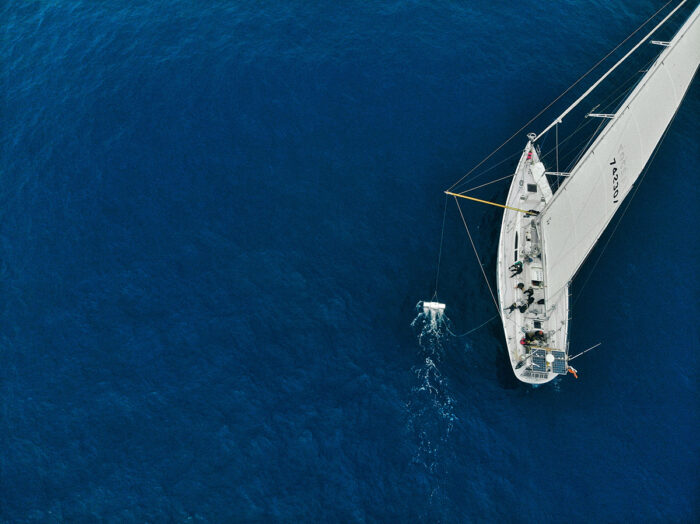
I learnt to sale on the magnificent J-Class yacht Velsheda in the late ’80s and spent a few summers as crew before jumping over to the square rigged brig TS Astrid on which I spent many happy months sailing the Channel and taking part in the Tall Ships Race. I then worked on various boats in the Caribbean for a year and sailed across the Atlantic on the tops’l schooner TS Unicorn. I remember night after night on the seemingly pristine sea watching the glowing, glittering phosphorescence resulting from the bioluminescence of organisms in the surface layers of the sea (we took two months crossing the Atlantic so there were plenty of sea sparkle nights to enjoy!) I never imagined that I would be sailing the oceans again three decades later to carry out research into the degradation of the marine environment.
My Masters in Native American Studies at the University of Essex was the culmination of an interest in the Andean region which stemmed from somewhere far back in my childhood – I remember asking for a picture book about the Incas as a Christmas present one year when I was still quite young. I immersed myself in learning about indigenous cultures past and present and would have continued with my PhD on the symbolism of colour and natural dyes in the Andes. However, having set up Pachacuti in the summer holidays and seen at first hand the real difference fair trade could make to textile-producing communities in Ecuador, I decided to turn my interest in the region to more practical use.
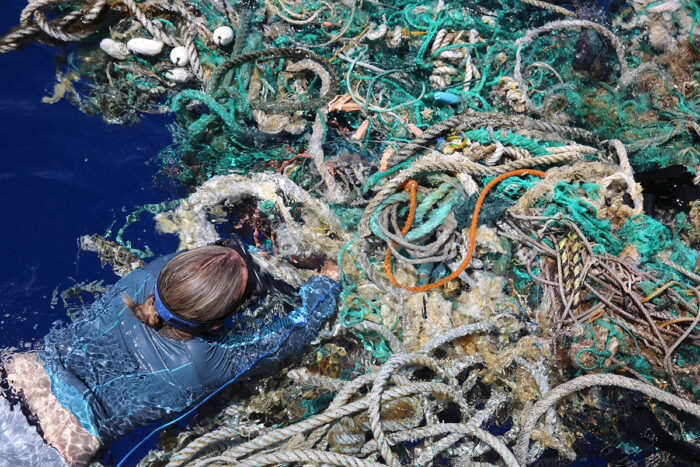
One of the key concepts of the Andean worldview is ayni, meaning reciprocity and balance. Balance does not mean just a static equibrium; the Inca strived for the creation of an animated cosmos through a system of continual exchange based on mutual respect, justice, and solidarity. They saw reciprocity as the foundation for peace, resilience and enduring relationships with our environment and our community both near and far. Ayni was a continuous accompaniment to life in the Andes and the foundation on which society was based. Indeed, life itself can be seen as ayni.
If the equilibrium between communities and the natural world was altered, it could result in floods, or lack of rains. Andean peoples understood that ayni has to be recreated every day in order for regeneration to take place and, as a result, knew that they needed to give things up, to make sacrifices to restore balance. Reciprocity moves people beyond self interest in order to do something for the common good.
Perhaps it is not surprising that in 2008, Ecuador became the first country to legally recognise the rights of nature and two years later Bolivia adopted the Law of the Rights of Mother Earth. This means in practice that people can now sue on behalf of the ecosystem. The Ecuadorian Constitution says this will help to “achieve the good way of living, the sumac kawsay.” Nature is part of the social fabric of life, not a resource to be exploited. The Andean concept of good living or living well doesn’t mean living better than others, nor does it imply the accumulation of material wealth. It means living well together, with nature, with mutual support, with ayni.
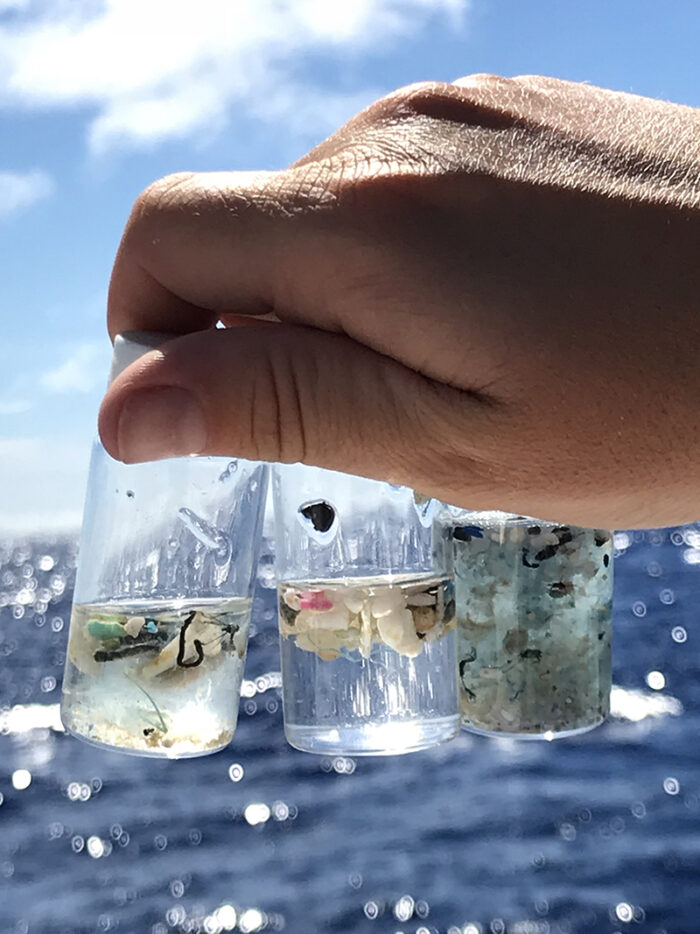
I was reminded of this whilst on holiday this summer, in a chalet by the sea on Branscombe beach in Devon. I was working there with my daughter, Sienna, and we were discussing stakeholders for Fashion Revolution’s policy dialogue toolkits. She told me that we must make sure we include stakeholders who don’t have a voice like the ocean and marine life. It seemed so obvious once she said it and I was astonished I had never previously thought of including them. This just emphasised to me how far we have become detached from seeing our world as a living being.
Reciprocity is inherent in the way the earth works, although there are limits that are difficult to reverse once they are crossed, as set out in the UN United in Science report issued on 22 September. Our activities, our pollution, our degradation of the marine environment are stressing the earth’s natural capacity for reciprocity. If we are to tackle toxics and plastic pollution in our oceans, as well as climate change, waste, and the myriad other environmental issues relating to the fashion industry, we know that every choice and every action matters. If we want to see regeneration of our waterways and oceans which are essential for living well on this planet together, we need to take co-operative responsibility. The resources of both land and sea are a gift, and this gift requires reciprocity in order to maintain healthy ecosystems.
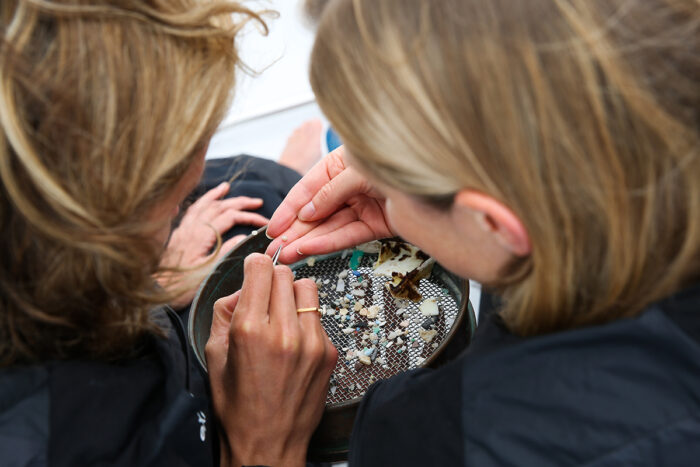
When I join eXXpedition and sail some 2000 miles through the Pacific Ocean, I will be taking part in groundbreaking scientific research on board this floating laboratory to help build a comprehensive picture of the state of our seas. I will also be helping to unravel how we got into this mess and how we can help shift our mindsets towards a more sustainable, a more balanced, future which encourages progress to a more regenerative system. The worldview of the peoples who inhabit the countries past which I will be sailing may well help us to find some of these solutions.
***
The eXXpedition Round the World voyage, which sets sail from Plymouth, UK on October 8th 2019, will sail through some of the most important and diverse marine environments on the planet. This includes crossing four of the five oceanic gyres, where ocean plastic is known to accumulate, and the Arctic on board 73ft sailing vessel S.V. TravelEdge. Under the directorship of award winning ocean advocate Emily Penn, 300 women will join the research vessel as crew over 30 voyage legs to journey more than 38,000 nautical miles. Follow news and updates via #eXXpedition @exxpedition on Twitter / @exxpedition_ on Instagram /eXXpedition on Facebook
I am looking for sponsorship and donations towards my participation in this groundbreaking voyage. Please see more information here – I am very grateful for any support.
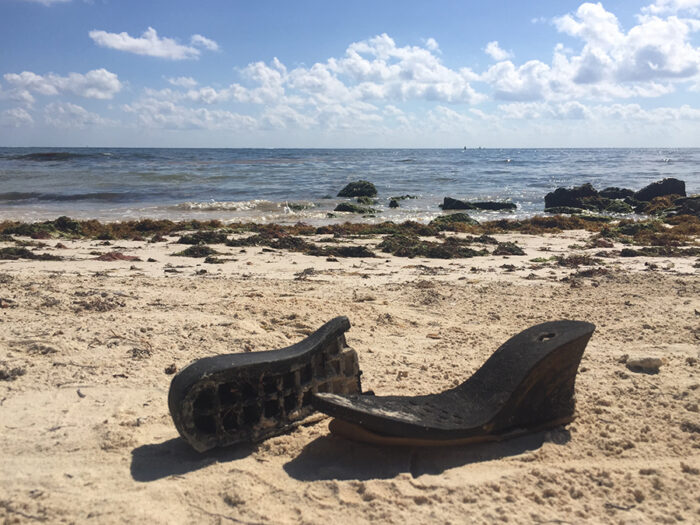
Header photo: Soraya Abdel Hadi/eXXpedition

